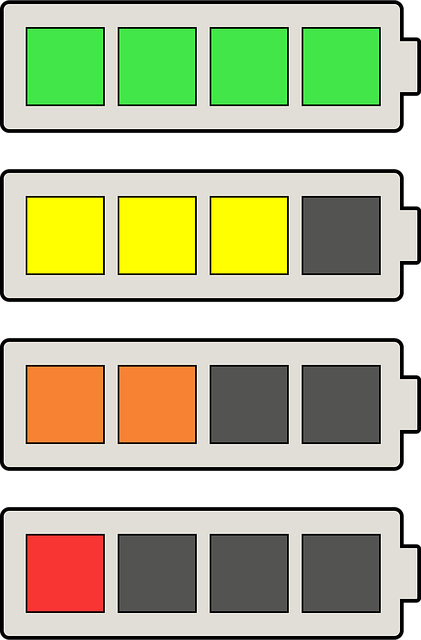Best Binance Trading Indicators for Successful Trading
Author: Jameson Richman Expert
Published On: 2025-09-13
Prepared by Jameson Richman and our team of experts with over a decade of experience in cryptocurrency and digital asset analysis. Learn more about us.
Finding reliable and effective trading indicators on Binance can significantly enhance your technical analysis, optimize your trading strategies, and increase your chances of consistent profitability. In the highly volatile and fast-paced world of cryptocurrencies, traders require sophisticated tools that can help them analyze market trends, identify high-probability entry and exit points, and manage risk more precisely. This comprehensive guide explores the top Binance trading indicators, offering in-depth explanations of their mechanics, advantages, limitations, and practical applications. Whether you are a novice or an experienced trader, mastering these indicators will provide a vital edge in navigating the unpredictable crypto markets.

Understanding the Importance of Trading Indicators
Trading indicators are mathematical calculations derived from historical price, volume, or open interest data. They serve as essential tools for technical analysis, helping traders interpret market behavior and forecast future price movements with greater confidence. On Binance, which offers an extensive array of cryptocurrencies and boasts high trading volumes, effective indicators can be the difference between sustained profits and repeated losses. According to Investopedia, a well-designed combination of multiple indicators can provide a comprehensive view of market conditions, including trend strength, momentum, volatility, and potential reversal zones. Properly utilized, indicators enable traders to develop disciplined, data-driven strategies that reduce emotional decision-making and improve overall risk-adjusted returns.
Top Binance Trading Indicators
1. Moving Averages (MA)
Moving averages (MAs) are fundamental trend-following tools widely used by Binance traders to smooth out price data and identify the prevailing trend direction. The two primary types are the Simple Moving Average (SMA), which calculates the average of closing prices over a specified period, and the Exponential Moving Average (EMA), which assigns greater weight to recent prices to respond faster to market shifts. These tools are crucial for establishing trend direction, support and resistance levels, and potential reversal points.
Traders often employ crossover strategies—such as the "Golden Cross" (short-term MA crossing above long-term MA) signaling potential bullish momentum, or the "Death Cross" (short-term MA crossing below long-term MA) indicating possible bearish reversals—as buy or sell triggers. For example, a 50-day and 200-day MA crossover is a classic signal used to identify long-term trend shifts. Moreover, combining multiple MAs across different timeframes enhances the robustness of signals, allowing traders to confirm trend strength and avoid false signals in choppy markets. An advanced approach involves analyzing the slope of moving averages, where steeper slopes suggest stronger trends, and flattening slopes indicate consolidation.
Limitations include lagging response during rapid market shifts and false signals during sideways consolidations. To mitigate this, traders often combine MAs with momentum indicators or volume analysis for confirmation.
2. Relative Strength Index (RSI)
The RSI is a momentum oscillator that measures the speed and magnitude of recent price movements to identify overbought or oversold conditions. Typically calculated over a 14-period timeframe, RSI values oscillate between 0 and 100. Readings above 70 suggest an overbought market, indicating a potential correction or reversal to the downside, while readings below 30 suggest oversold conditions and a possible rebound.
Advanced traders utilize RSI divergence—where price makes new highs or lows that are not confirmed by RSI—to anticipate reversals. For example, a bearish divergence (price makes higher highs while RSI makes lower highs) can warn of an imminent downturn. Conversely, bullish divergence suggests a potential upward reversal. RSI can also be used to identify trend exhaustion, especially when combined with other indicators like MACD or volume spikes.
Limitations include false signals in trending markets where RSI can remain overbought or oversold for extended periods. Therefore, combining RSI with trend filters, such as moving averages, ensures better timing and reduces whipsaws.
3. Bollinger Bands
Bollinger Bands consist of a central line, typically a 20-period Simple Moving Average (SMA), and two outer bands set at two standard deviations above and below this average. These bands dynamically expand and contract based on market volatility—widening during intense price swings and contracting during sideways trading.
Price touching the upper band may indicate overbought conditions, suggesting a potential pullback, while touching the lower band can imply oversold levels and a rebound opportunity. Moreover, band contraction—also called a "squeeze"—signals low volatility, often followed by a significant breakout or breakdown. Traders look for confirmation via volume spikes or other momentum indicators to validate breakouts, as false signals are common during choppy ranges.
Advanced applications include using Bollinger Bands in conjunction with trendlines or Fibonacci levels to pinpoint reversal zones, or applying percentage-based Bollinger Bands for more adaptive signals across different assets. The key is to interpret band signals within the broader market context to avoid premature entries.
4. MACD (Moving Average Convergence Divergence)
The MACD is a versatile momentum indicator that compares two EMAs—commonly the 12-day and 26-day—to reveal trend direction, momentum shifts, and potential reversals. It consists of the MACD line, the signal line (a 9-day EMA of the MACD), and a histogram showing the difference between these two lines.
Crossovers are primary signals: when the MACD crosses above the signal line, it indicates bullish momentum; crossing below signals bearish momentum. Traders also look for MACD divergence—where price makes new highs or lows without corresponding MACD confirmation—to anticipate weakening trends. The histogram provides early warnings of shifts in momentum; for example, a shrinking histogram suggests an impending reversal.
MACD performs well in trending markets but can produce false signals during sideways consolidations. Combining MACD with volume analysis and trend filters enhances its reliability, especially in volatile crypto markets where rapid reversals are common.
5. Volume Indicators
Volume analysis is fundamental for validating price movements and trend strength. Indicators such as On-Balance Volume (OBV), Volume Rate of Change (VROC), and Chaikin Money Flow (CMF) quantify buying and selling pressure. Rising volume during an uptrend confirms the strength of the move, whereas decreasing volume during rallies may signal weakening momentum or a potential reversal.
Key signals include volume spikes at support or resistance levels, which often precede breakouts, serving as early confirmation. For instance, a breakout accompanied by high volume is more likely to sustain than one with low volume. Similarly, divergences between volume and price—such as rising prices on declining volume—warn of possible reversals.
Binance’s charting platform allows traders to overlay and customize volume indicators, set alerts for unusual activity, and analyze order book data. Incorporating volume into your strategy filters false signals from purely price-based indicators and enhances decision confidence.
How to Combine Trading Indicators Effectively
Successful trading on Binance requires a layered, multi-indicator approach that confirms signals across different market dimensions. Relying solely on one indicator increases the risk of false signals. Instead, combine trend-following tools (like moving averages) with momentum oscillators (RSI, MACD), volatility measures (Bollinger Bands), and volume analysis for a comprehensive view.
For example, a bullish setup could involve a moving average crossover confirming trend direction, RSI showing oversold conditions or bullish divergence, MACD indicating positive momentum, and volume spikes confirming buyer interest. This multi-layered confirmation reduces the likelihood of entering false signals and improves the accuracy of entries and exits.
To avoid indicator overload, select a handful of tools that work synergistically, and customize their parameters based on the specific asset or timeframe. Regular back-testing and maintaining a trading journal help fine-tune your indicator combinations for consistent performance. Remember, simplicity combined with thorough analysis often yields better results than overly complex setups.

Advanced Strategies and Tips for Binance Traders
Beyond basic indicators, advanced traders incorporate tools like Fibonacci retracement levels, Ichimoku Cloud, Parabolic SAR, and Market Profile to add depth to their analysis. Fibonacci levels help identify potential support and resistance during corrections, often aligning with trend indicators for higher-probability entries. The Ichimoku Cloud offers a holistic view of trend direction, momentum, and key support/resistance levels with minimal clutter, making it invaluable in volatile conditions.
Parabolic SAR provides early signals of trend reversals and can be used to trail stops effectively, optimizing gains while managing risk. Market Profile displays volume traded at price levels, revealing areas of high interest or "value zones," which can indicate critical support or resistance areas.
Combining these advanced tools with the core indicators enhances predictive power, especially during trending periods. Effective risk management—such as placing stop-loss orders beyond Fibonacci retracement levels or Ichimoku support—protects gains and limits losses. Regularly reviewing and systematically refining your multi-tool analysis process is crucial for long-term profitability in the unpredictable crypto environment.
Utilizing Binance’s Trading Features and Tools
Binance’s advanced trading platform seamlessly integrates with TradingView, enabling traders to customize charts, set sophisticated indicator alerts, and draw detailed trendlines. Automated trading through Binance’s API allows systematic strategies based on indicator conditions, ideal for high-frequency trading or algorithmic setups.
The platform offers various order types—limit, market, stop-limit, and OCO (One-Cancels-the-Other)—which can be combined with indicator signals for automated entries, exits, and risk management. Staying updated on new features like AI-driven analysis tools, enhanced charting options, and real-time alerts helps traders adapt swiftly to market volatility. Developing disciplined routines—such as predefined rules for trade entries/exits based on indicator confirmations—ensures consistency, reduces emotional biases, and enhances overall trading performance.
Affiliate Links and Resources for Binance Traders
For traders seeking to expand their trading infrastructure or explore alternative platforms, reputable exchanges with attractive referral programs include Binance, MEXC, Bitget, and Bybit. You can register on Binance via this official Binance registration link. Many platforms offer demo accounts, educational resources, and active trading communities, vital for learning indicator application, back-testing strategies, and honing skills.
Utilizing these resources accelerates your learning curve, helping minimize losses and build confidence in technical analysis. Engaging with community forums, webinars, and mentorship programs can further deepen your understanding of effective indicator use and strategy development.

Conclusion
Mastering the best Binance trading indicators is crucial for anyone committed to profitable cryptocurrency trading. A balanced, multi-indicator approach—incorporating moving averages, RSI, Bollinger Bands, MACD, and volume analysis—provides a comprehensive understanding of market dynamics. Layering these with advanced tools like Fibonacci retracements, Ichimoku Cloud, and Parabolic SAR, coupled with disciplined risk management, significantly enhances your trading effectiveness. Remember, continuous education, adapting strategies to evolving market conditions, and systematic review are key to sustained success. Staying informed about technological advancements, new indicator developments, and industry trends will help maintain your competitive edge in the ever-changing crypto trading landscape.